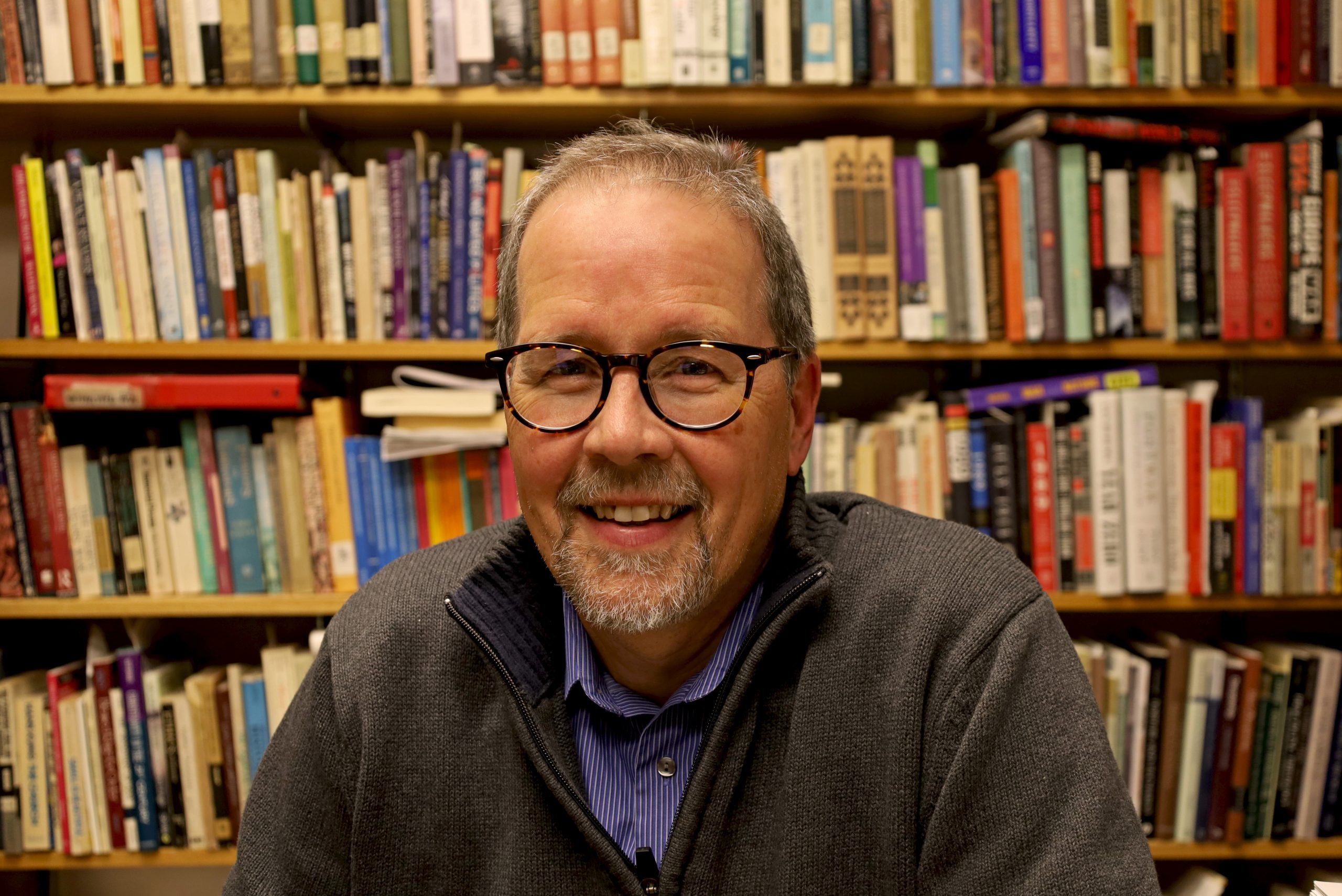“What does inclusion look like?”
This is just one of the questions that John Roth, professor of history, is seeking to answer through his ongoing research for a book about the history of Goshen College. The book, which is expected to be completed a year from now, will serve as a study of the college through the lens of “diversity, equity and inclusion.”“The story is really about this growing pluralism that, on the one hand, the college is openly affirming,” Roth said. “And at the same time, the college is having a great deal of difficulty truly embracing this. The gap between who we say we want to be and the lived experience of many students just continues to be too wide.”
Roth began his research for the book in January, drawing material from archived administrative files, past histories of the college and “The Record” — he’s currently working his way through every issue of the student newspaper since 1959.
“‘The Record’ is a fascinating source, but as a historian, I’m constantly aware of some of its limits,” he said.
Some of the limits Roth has taken note of include a lack of stories by Black writers and the overarching absence of race-related coverage in the past 60 years.
“There are episodic efforts by editors to reach out to [Black students] and see what their opinions are about various things,” he said. “There are some hand-wringing editorials about race and racism in the community. So it comes up, but it’s not a central theme.”
Reading multiple issues of ‘The Record’ has allowed Roth to identify shifts in student opinion surrounding campus culture, as well. For instance, he notes that Goshen students challenged several college expectations in the 1980s, including a rule against on-campus dancing that lasted until 1986. Other popular points of debate in the ‘80s were residence hall visitation hours, the showing of R-rated movies on campus and the introduction of MTV in student lounges.
Perhaps the clearest theme that has arisen from Roth’s research is the idea of a changing Goshen College identity — what it means to be a part of the college community, and how that definition has shifted and expanded over time.
“Every year, we have a quarter of our students turn over,” Roth said. “And so, there is an inherent dynamism in this question of ‘Who is Goshen College?’ It is always changing, and yet, there are these deeper, underlying currents that I find really interesting.”
In the past, Goshen’s identity has been closely linked to the Mennonite faith and Anabaptist tradition. However, this, too, is shifting; Mennonites made up more than 70% of Goshen’s student body when Roth began attending the college in 1977, compared to the 28% of students who identify as Mennonite today. Roth stresses that this change is not a negative one, but rather an opportunity for the college to rethink its identity as a religious institution.
“I’m not sure we have cultivated a language to describe a new narrative that expresses with confidence and enthusiasm what it means to be Goshen College today,” he said. “Some folks would see it as declension … but I’m not there at all.”
Roth said: “I think in some ways, where we are today is an expression of our calling as a church-related school that maybe better embodies the ideals that we’ve said are Goshen College’s, in the fact that our students are more diverse and that we are slightly closer to a day when we assume that everyone here has a voice in the shaping of the college identity and not just the privileged, religious Mennonites … there’s a myth of Mennonite exceptionalism.”
To diversify the voices within Goshen’s story, Roth says, the college can continue to name its “wounds.”
“If [a wound] goes unnamed, it goes unhealed,” he said. “And I think … we need to live with the fact that healing takes more time and effort than what we have heretofore given. We are only now beginning to recognize at a much deeper level that this land had owners before we showed up … there were actual native peoples who lived on this land, who also had stories which are almost completely absent in the history of Goshen College.”
Roth plans to begin writing the book “in earnest” in January of next year.




